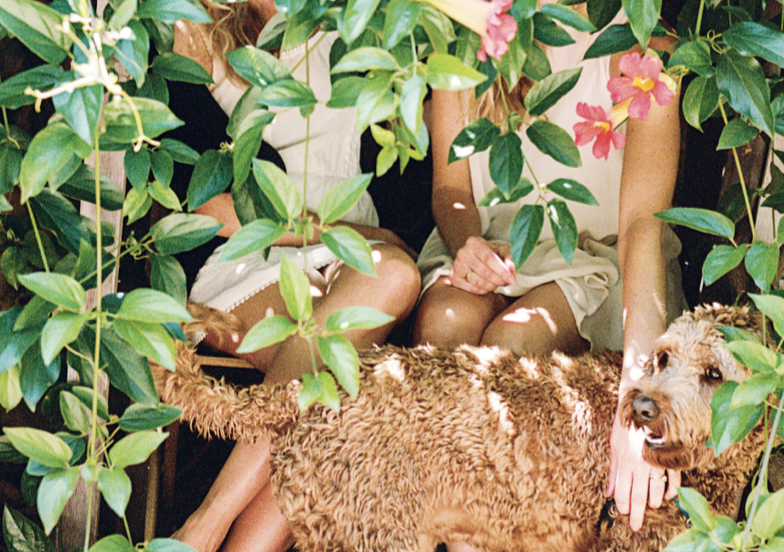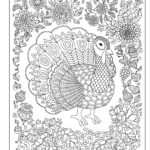In Julie Pointer Adams’s lush entertaining manual, Wabi-Sabi Welcome, she teaches us how to turn the generous act of getting together into the deeper art of being together. In this section, excerpted from the book, Adams asks us to take a cue from kids, who naturally gravitate towards safe, cozy spaces that encourage meaningful connection.

Make Forts Fun Again
Forts—or “child caves,” as I like to refer to them—are those small, secluded spaces that kids seek out: under tables, within bushes, behind couches, inside cupboards, and below stairways. The phrase child caves comes from one of my favorite books, A Pattern Language, in which the authors talk about how important it is for children to have hideaways that are just their size, or at least small enough to fit only a friend or two. Thinking of these little spaces reminds us that as young people, we were drawn to places that safely enveloped us and—even better—were hidden from the adult world, where expectations abound. I’m not sure we ever stop needing shared secret places; we just grow up and tend to think we’ve outgrown “childish” tendencies as well. As a result, I think we miss out on some of the more magical places and moments that children naturally know how to enjoy.
My childhood was filled with tucked-away spaces like attics, closets, basements, hedges, forest hideaways, and treetops. The times I shared there with friends bonded me to them in ways I never experienced merely on the open playground. Many years later as an adult, I was lucky enough to have access to a very small second-floor outdoor porch. It overlooked downtown city buildings, and had a locking door for privacy and a Hawthorne tree beside it for shade. This place became known as the Nook, and it was a true refuge. Countless evenings were shared with friends in that little shelter, and many relationships were forged through conversations that may not have happened in any other setting. My childlike urge to enjoy tiny retreats with close companions has simply never gone away.
One way to reclaim this more lighthearted approach to connecting is to take cues from kids (and your childhood self). Watch the way they gravitate toward light-speckled, shadowy spaces under trees, and find comfort in nooks and crannies that are just their size. They’ve got the right idea when it comes to finding wabi-sabi settings that make us vulnerable with others, no matter our age. Environments that force us to touch knees, rub arms, or share leg space can’t help but make us feel like spilling secrets as well. There are exceptions, of course (mainly public spaces like airplanes, buses, the subway; i.e., places where we have no choice but to be close), but when we sneak off to these “forts” on purpose, the physical closeness has a special effect on us.
This is not to persuade you to go find hidey-holes in the back bushes in which to throw parties (though if that idea appeals to you, by all means make it your secret garden to share). Rather, the point is to recognize that we really haven’t changed so much. We still love hiding away in places that shelter and hug us in just the right ways—and these hideouts let us have the heart-to-hearts we often need. Maybe it’s a broken-in love seat, a shady bench in your nearby park, a mini backyard patio, or simply a secluded corner of the house. No matter what kind of child cave you discover, the point is that sharing hidden places can deepen our relationships—and make for some pretty extraordinary memories.
 About the Book
About the Book
“An antidote to the veneer of perfectionism so often presented by books of its kind, Wabi-Sabi Welcome offers readers license to slow down and host guests with humility, intention, and contentment.”—Nathan Williams, founder of Kinfolk
Wabi-Sabi Welcome is sharing a pot of tea with friends. It is preparing delicious food to nourish, not to show off. It’s keeping a basket of cozy slippers at the door for guests. It is well-worn linens, bouquets of foraged branches, mismatched silverware, and heirloom bowls infused with the spirit of meals served with love.
In this lush entertaining manual, author Julie Pointer Adams invites readers into artful, easygoing homes around the world—in Denmark, California, France, Italy, and Japan—and teaches us how to turn the generous act of getting together into the deeper art of being together.
In this book, readers will find: unexpected, thoughtful ideas and recipes from around the world; tips for creating an intimate, welcoming environment; guidelines for choosing enduring, natural decor for the home; and inspiring photographs from homes where wabi-sabi is woven into daily living.
Buy the Book
Indiebound | B&N | Amazon | Workman





No Comments